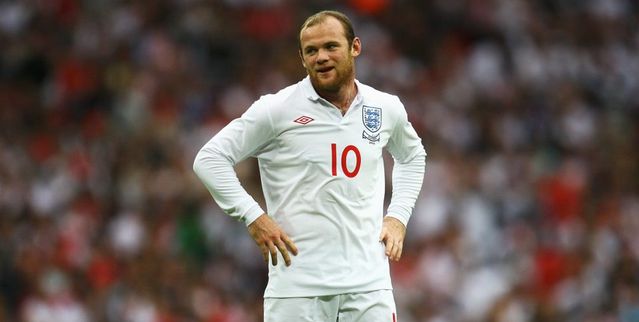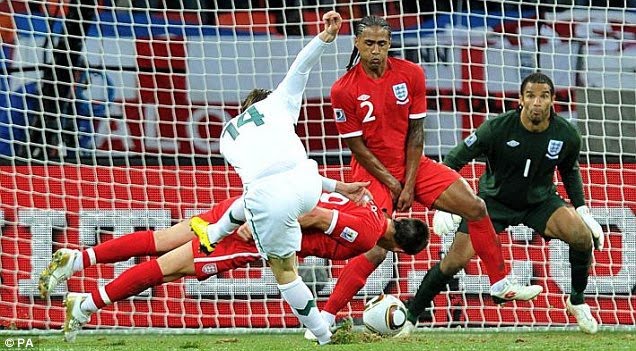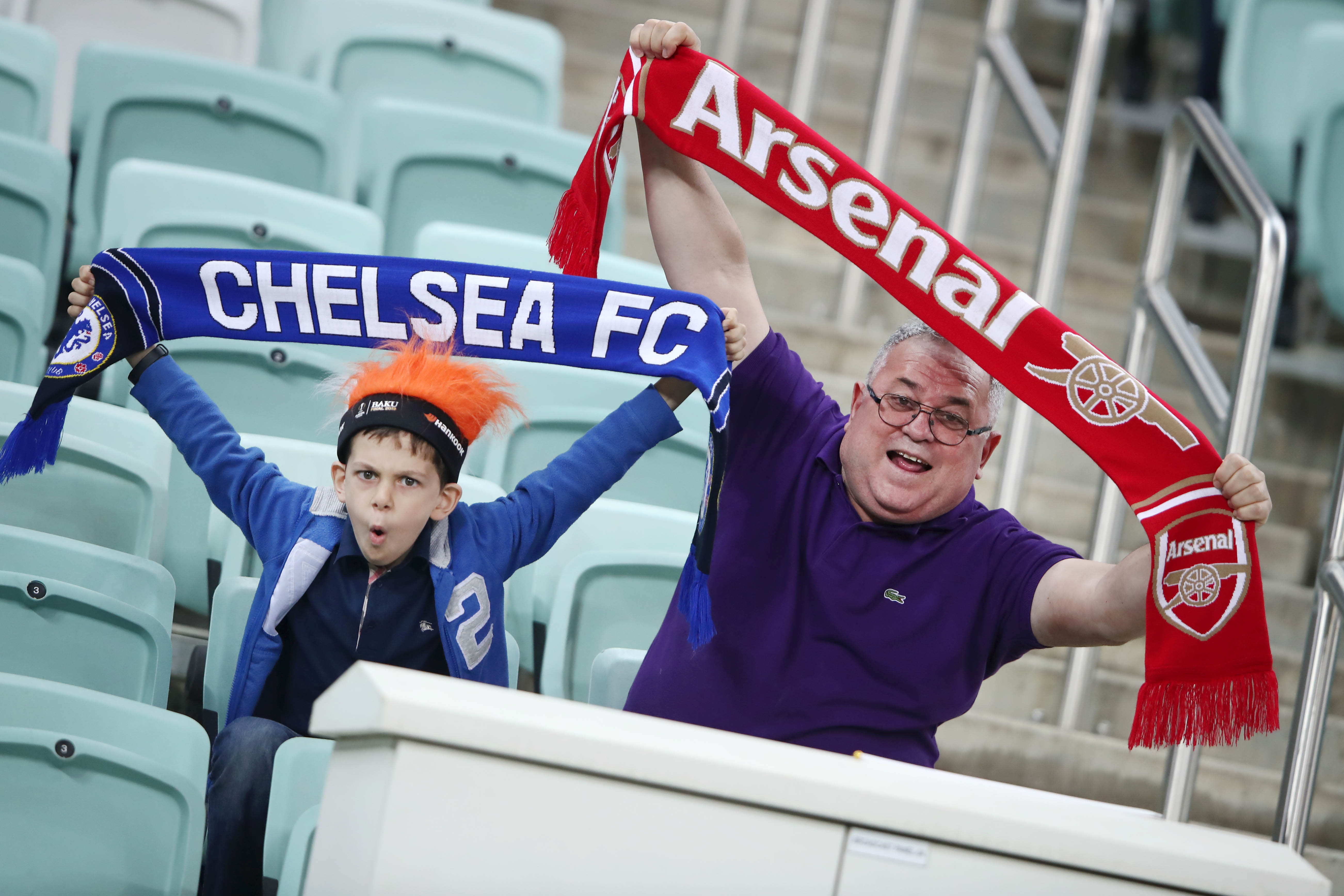Two games, two wins. Surely a good week for England, then? Well in terms of the aim, qualification for Euro 2012, it certainly was. In terms of parameters like performance and potential for the tournament itself, it was more of a mixed bag.
The first win was clearly the most positive. A 3-0 win is hard to fault, especially when it’s away to Bulgaria with a number of younger players playing in the still new 4-3-3 system. Bulgaria it has to be said have fallen a bit from their peak in international football and the score-line may have been harsh on them, but for England there was an element of comfort throughout and two goals from Rooney after the opening goal from Gary Cahill made for a happy outing on Friday night.
The atmosphere around Tuesday’s game was laden with expectations and general all-round positive feeling. Unfortunately both were ill-founded. England struggled to break Wales down and when they did, they still found themselves a little loose at the back and in attack. A 1-0 win was just about deserved but it was certainly not as comprehensive a victory as many would have expected it to be. It would behoove followers of the English national team to examine the tactical points of the last two games.

A lack of creativity in the centre
The formations in both games were slightly different. Against Bulgaria it was close to a 4-2-3-1 formation with Parker and Barry holding while Walcott, Young, Downing and Rooney had the opportunity to interchange up front and to link up in attack. The early goal was massive simply because England no longer had the pressure to attack. With a goal from a corner not long after and then a quick break after that, England didn’t really have to break down Bulgaria. Against Wales it was slightly different. Milner replaced Walcott in the team which added an extra man in the centre but a hard working efficient one not a creative one. Lampard also replaced Parker but again, he is more of a box to box player rather than a creative playmaker.
Barry too was never going to open Wales up with a defence splitting pass, while Milner was drifting around in midfield, helping out the wide men. Meanwhile Lampard’s runs from midfield were just going straight into the path of Rooney and the inverted wingers Downing and Young. Thus England were overcrowded in that area often.
If you look at Capello’s inspiration for this system, Barcelona, they have the perfect balance in midfield. Busquets generally sits and acts as a free man in possession, drifting in his holding position and making himself available for the pass. Xavi is the player who makes the passing game tick though and is the metronome for their possession game, keeping it ticking over and controlling the direction of the ball and play.
However a team playing the ball slow from side to side, moving a team around will still struggle if there is no penetration. Xavi is certainly capable of hurting a back four yet his deeper role still requires intelligent, bright play ahead of him. This is where Iniesta comes in. He generally plays the furthest forward of the Barcelona three in midfield (though that may change this season) and he is generally the one who makes the attacks, simply because his play between the lines is excellent and he is capable of dribbling to unbalance the opposition or play a quick pass to open them up, while Messi does the rest.
England simply didn’t have this against Wales. Midfielders were dropping deep to pick the ball up from the centre backs but were struggling to find a way through Wales’ compact shape. Young and Downing were running into players from out wide and therefore a more concise method from the centre was required which never really came. The front three were interchanging; while Rooney dropped deep, Young often moved into a role closer to the highest attacker, Lampard himself also interchanged positions with Rooney on a few occasions but the penetration and key pass were missing.

A definite lack of width
When facing a team that sat deep and defended in a compact shape, it is often important to spread the play and try and move them around in hope of opening them up. One of England’s problems against Wales was that they were playing with inverted wingers in Downing and Young who were both playing on the opposite side to the side of their preferred foot, therefore were both cutting inside. They were running into the space Wales had covered and were, to use a phrase, running into a brick wall.
With a clever little ‘hole’ player this wouldn’t matter as much but England didn’t have this and so struggled. The crossing was poor on the whole because of Wales’ compactness in the centre and out of 21 crosses by England, only 1 found a teammate. The full backs weren’t playing too high on the flanks, particularly Smalling who was mainly offering a pass if Downing needed it rather than creating an overlap.
The goal ended up happening because Milner interchanged with Downing who moved inside leaving Milner 1 on 1. His ball across the box was half cleared but England got the move back going again. The ball got worked to Downing while Milner moved inside, leaving Downing 1 on 1 with Ledley. He skipped away from him fairly easily and played it low into the box where Ashley Young finished it.
For the rest of the game England still struggled with this. The wingers didn’t get to the by-line enough because they wanted to be on their preferred foot and even though Milner was drifting around combining with them on the flanks it still didn’t work.

England work much better on the counter attack
One thing you can’t accuse England of is lacking pace in attacking areas. In the first game their attacking players, Young, Downing, Walcott and Rooney were all capable of sprinting quickly and getting behind the defence.
The positions England do lack pace in are in midfield and more obviously in defence. Thus sitting back and counter attacking does a better job of covering up their weakness and highlighting their strengths, as it did in the case of Lampard.
England’s system in both games was also largely distinct. One of the problems with a straight 4-2-3-1 with two definitive defensive or holding players in front of the defence is trying to link it to the forward line. Because of this, some teams who have this problem tend to be split into two parts: the defensive part and the attacking part. In the game against Wales, a 4-3-3 was used but with worse problems. Because of the lack of creativity from midfield and attacking penetration from there, the team were reliant on the front three and any runs from Lampard from midfield. Wales were virtually defending with 9 men plus the goalkeeper while Morison was alone in attack for any direct balls if Wales won the ball. England were virtually choked up front, gasping for good chances.
In stark contrast, looking at the system in a counter attacking sense, it makes more positive reading. Any lack of pace can’t be taken advantage of behind the centre backs. The centre midfield three can sit deep and not allow space in behind them for attackers to run at the centre backs. Smalling, generally known as a centre back can do perfectly well with crosses from the opposite side of the pitch with his heading ability and knowledge of keeping narrow. And of course with Rooney often the centre point of counter attacks for Man United, a similar role can be used for England with Young and Downing running off him at pace and Lampard making late runs from midfield.
![Young,_Ashley[c]wikimedia commons](http://www.thehardtackle.com/wp-content/uploads/2011/05/Young_Ashleycwikimedia-commons.jpg)
England do have a better shape and balance than they did in the World Cup
The optimism which often engulfs any major competition for England was in full force last summer. A fantastic qualifying campaign with a system that seemed to work well had led to the opinion that England were major challengers for the World Cup. Lampard and Barry were the holding midfielders, Lennon was often the right winger, able to run at the opposing left back and spread the width on that side while Gerrard cut in from the left and linked up with Rooney who was excelling playing just off Heskey who despite his lack of goals was hurting opposition centre backs and providing space for England to build up attacks.
When the World Cup came though, the team looked tired and completely bereft of ideas. Long balls became the norm because there was nobody in the hole, either in defensive midfield or attacking midfield. There was no play between the lines. Positions were very rigid and the movement was restricted.
After the thrashing received from Germany, England were seemingly in disarray as a team. Many put it down to lack of technical ability from the players, many put it down to formation, many put it down to lack of passing ability. Since then Capello has had to rearrange the squad a lot more. More younger players have been included, more fringe players have started and the experienced players haven’t featured nearly as prominently.
The game against Bulgaria highlighted this. The shock that Lampard didn’t start even though he was available showed people that Capello was learning that some of the experienced players had to start to be phased out.
It’s not just the players that have changed though. More emphasis on their passing game has been introduced as well as the 4-3-3 formation being preferred to the 4-4-2 that was originally being used by Capello.
Of course it’s easier to play Bulgaria than Germany but you could see the balance and play was more fluid. Even against Wales you could see that the build up was more patient and that interchanging was frequent even though there were a few tactical problems with breaking the Welsh down.
England are still lacking creativity in midfield and passing is still laboured in defence and midfield. However with players like Wilshere and Cleverley featuring in their clubs, showing better passing and technical promise than the generation of midfielders before them, this problem with circulation of the ball could be solved. With Rooney generally leading attack but also dropping deep and the wingers cutting inside with midfielders running from deep, the overall predictability is a lot less than it was just over 12 months ago.
With Euro 2012 not long away and the spots in Capello’s final XI still up for grabs, the next few months are going to make interesting reading for the England national team and while tactically the team do seem better prepared than before, their faults remain obvious.




